Put your growth on autopilot
GrowSurf is modern referral program software that helps product and marketing teams launch an in-product customer referral program in days, not weeks. Start your free trial today.
Right this very moment, many of your loyal users are tapping away at their mobile screens to use your app. That’s a good thing!
But are you getting a steady increase in revenue month over month?
While it’s true that your loyal user base is your most valuable asset, your business can’t survive on repeat customers alone. After all, buying habits and attitudes change.
If you want to increase your revenue and keep it sustainable in the years to come, you have to consistently put your mobile app in the hands of new users.
And what better way to do that than to ask your existing customers for help?
Setting up a referral program for your mobile app is a great way to pull that off.
In this blog post, we discuss the steps on how to increase your mobile app revenue with a referral program.
But first...
Simply put, a referral program is a systematic way to encourage and motivate customers to spread the word about your product, service, or company.
Typically, companies run a referral program by offering a reward to their customers in exchange for a referral.
Here’s the skinny: referral programs and mobile apps are a match made in heaven.
In fact, a Think with Google study says that 89% of people will recommend a brand to others following a positive experience on mobile. The same study says that consumers are 1.5 times more likely to recommend a brand that provides them with "helpful" interactions on mobile.
You’re probably asking:
Why use a referral program when I can spend my hard-earned dollars on paid advertising instead?
I can think of three reasons:
Did you know that referral leads convert 30% better than leads generated from other marketing channels?
This is because referral marketing is built on trust. In fact, a Nielsen study shows that 92% of people are more likely to trust a recommendation from a friend or family than an advertisement.
Put simply, friends trust each other more than they trust you. So, what better way to earn people’s trust than to let their friends (your customers) vouch for you?
Think about it, when people send referrals or recommendations, they often do because they want to help a friend. This is why their friends trust them more than they trust you.
On the other hand, this is what you look like when you put up advertisements:
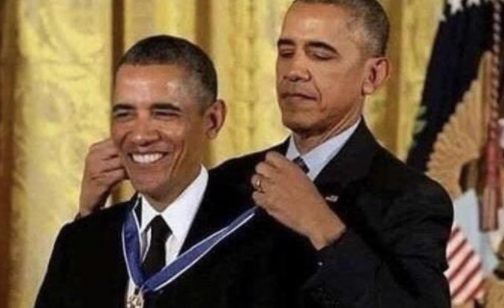
Referred customers are the best customers you could hope for. Why? Because they bring more value to your company than non-referred customers.
Here are a few stats to back that up:
As you can see, referred customers offer a ton of value to your company not just because of the raw profits they generate, but also because of the many ways they fuel your revenue growth.
You won’t have to sell your soul (or your precious Bitcoin) to get referral leads.
Unlike with ads, the costs involved in running a referral program are fixed and predictable. They don’t add up like costs for impressions, clicks, and conversions do.
With a referral program, the bulk of your marketing budget is spent on the incentives themselves, with the rest spent on the costs involved in running the program (which is negligible at best).
Let's get to the fun part. Here are 8 steps to increase your mobile app revenue with a referral program.
Want your mobile app revenue to shoot up? Step back and re-examine why you started doing this in the first place.
If your answer is to “retire early and build your dream house in the Bahamas,” try harder.
There’s got to be a deeper, more meaningful reason why you do what you do.
Otherwise, people won’t care about what you have to offer, much less recommend it to others.
To quote Start with Why ' author Simon Sinek, "People don't buy what you do, they buy why you do it."
And that’s not just “kumbaya” talk.
In fact, a global study shows that customers are 4-6 times more likely to purchase, protect, and champion purpose-driven companies.
Have you ever wondered why people don’t mind spending almost the entire day standing in line for the latest iPhone? It’s not only because the iPhone is a high-quality portable device.
Steve Jobs himself explains the reason way better than I could:
"With everything we do, we aim to challenge the status quo. We aim to think differently. Our products are user-friendly, beautifully designed, and easy to use. We just happen to make great computers. Want to buy one?"
An impactful statement, don’t you agree? Better yet, that statement translates into everything the company does — their products, services, messaging, and more.
Toonie is a mobile app that uses its “why” to resonate with target users. Aside from providing users with a reliable alarm to wake up to, everything the app does is informed by the company’s mission to “make the world brighter.”
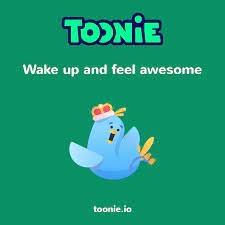
Image source: Toonie
So, how do you get clear with your brand purpose? One6Creative recommends that you ask the following 5 questions:
When your mobile app is backed by a big purpose, your product stops becoming a mere commodity. Having a reason for what you do makes your mobile app mean more to people, especially those who share your business’s core values.
As already mentioned, competition is high in the mobile app arena. If you want your mobile app to get noticed, the worst thing you can do is try to appeal to everyone.
Do this instead: pick a target audience and focus all your efforts on making their lives better (with your mobile app, of course).
Seth Godin, the Yoda of marketing himself, says as much in his book The Practice.
“How is it possible for three cowboys to herd a thousand cattle? Easy. They don’t. They herd ten cattle, and those cattle influence fifty cattle and those cattle influence the rest. That’s the way every single widespread movement/product/service has changed the world.”
Once you have a clear idea of whom you want to serve, everything else follows. Not only because it helps you create a better mobile app or product (for your target market), but also because it gives you a strong foundation for building trust among your growing community or tribe (so to speak). And what’s the foundation of referral marketing again? Trust!
Besides, knowing your target audience can help you market your referral program in ways that will make them send referrals as if their livelihood depended on it.
It can:
Granted, focusing on a specific target market can sometimes feel counterintuitive, especially at times when catering to a different audience provides growth opportunities. But here’s the thing with growth: it’s meaningless if you’re headed in the wrong direction.
Creating a user persona is a great way to help you stay focused on addressing the needs of your target market. In a marketing environment where most interactions are done digitally, a user persona is a good way to humanize your ideal users, making it easy for you to refine your message so it resonates with them.
Second, you’d do well to segment your app audience into manageable groups so you can create more relevant and personalized messages to each of your users, regardless of their location, purchasing behavior, and preferences.
Lastly, take the time to identify your most loyal and active users. This is the group you want to reach first to give your referral program a good head start.
If you want your customers to keep sending referrals, you have to make your product or mobile app worthy of referrals first.
Would you recommend a product that sucks even if you get something in return for it?
Doubt it. After all, it’s not a good look.
According to Contagious author Jonah Berger, social currency is one of the key drivers that make people share. In other words, people love talking about things that make them look good, rather than bad.
So, before you entertain the notion of creating a referral program, make sure you have a product or mobile app your users will be proud to share with others.
Here are good ways to find out if your product is referral worthy:
This is also a good time to check if your mobile app or product aligns with your 'why' (see step 1). This helps clarify your product vision and your goals, making it much easier for you to identify and track your key KPIs down the line.
For your referral program to become successful, you must address a question that’s foremost in every customer’s mind:
“What's in it for me?”
If you want to keep those referrals coming, offer them an incentive they can't resist. According to research, the most effective referral incentives are those that are relevant to your product or service. For example, consider offering in-app credits, premium features, or merchandise as rewards for your mobile app. These types of incentives not only motivate users to refer their friends but also encourage further engagement with your app.
For the incentive to stick, you need to dig deeper into what your target users value most. Is it status? Productivity? Financial stability? Maybe an opportunity to contribute to the community? (this is a good time to examine your user personas). According to SaaSquatch, offering a mix of reward types can cater to different user motivations and increase overall engagement. For example, you could offer a combination of discounts, early access to new features, exclusive content, and charitable donations to appeal to a diverse range of users.
Don't use rewards like they're dangling carrots. Make sure they are aligned with your product's core value to reinforce in your customers' mind what they love about your product. As ReferralRock explains, effective referral incentives tap into psychological principles like reciprocity, social proof, and commitment/consistency. If your incentives don't offer value that's intrinsic to your brand, your referral program won't have that 'secret sauce' that gives customers something to remember you by, and that helps fuel word of mouth.
Sign up for a free trial of GrowSurf to lower your customer acquisition costs, increase customer loyalty, and save gobs of time.

Here are different rewards to get you started:
How you structure your rewards is just as important as the rewards themselves.
Your reward structure can be:
Stumped for incentive ideas? Take the time to read our blog article on how to choose the perfect referral incentives.
Pro-tip: Your incentives don’t have to be expensive for them to be effective. If you want your mobile app to earn more revenue, make sure that your incentive costs don’t exceed your average LTV.
Take some time to go through the different incentives and incentive structures to find out which one will entice your customers but in a way that won't cripple your budget.
Morning Brew, for example, kept their cost per acquisition (CPA) low by taking advantage of discounts from bulk orders and offering incentives that bring in customers at no real cost to their company (premium content, exclusive memberships, etc..).
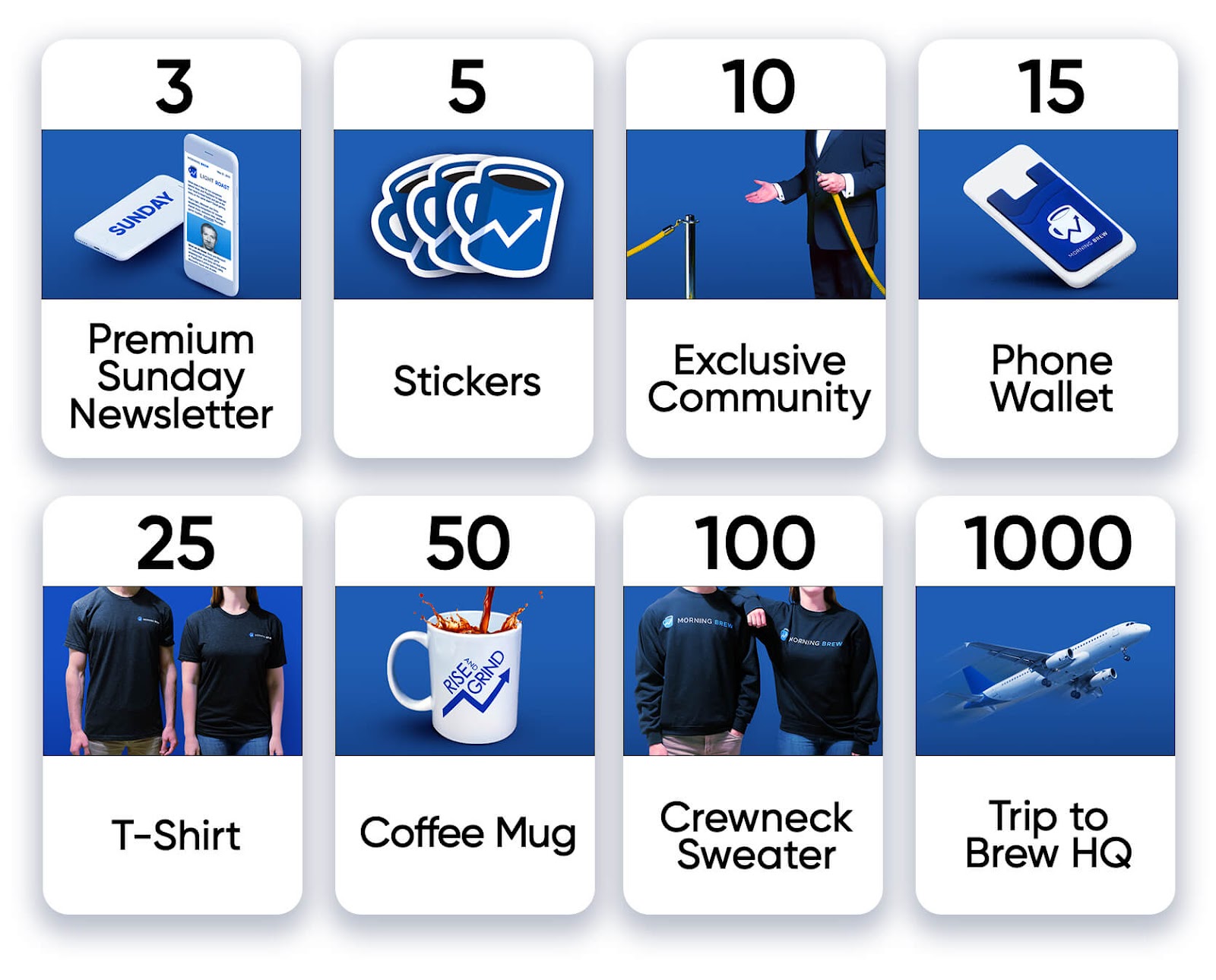
Image source: Medium
Before launching a referral program, decide first what success would look like.
Here are potential goals for your mobile app referral program:
As SaaSquatch notes, referral programs can be powerful tools for not only acquiring new users but also re-engaging existing ones and increasing their lifetime value. Setting clear goals aligned with your overall business objectives is crucial for measuring the success of your referral program.
Measuring your referral program's performance can sound complicated. But it doesn't have to be. To keep things simple, identify your referral program's current goal and then identify the core KPIs that will help you track, measure, and accelerate your progress towards that goal. According to Branch, some key metrics to monitor include participation rate, referral rate, impressions, conversion rate, and your app's k-factor (a measure of viral growth). Regularly analyzing these metrics can help you optimize your program and identify areas for improvement.
Can’t figure out which KPIs to pay attention to? Here are the most important metrics you need to focus on:
As ReferralRock emphasizes, tracking metrics like viral coefficient and customer acquisition costs is crucial for understanding the true impact of your referral program on growth and profitability.
You want your users to keep sending those referrals? Stop trying to motivate them all the damn time. For one thing, it doesn't work. Creating an environment that makes referring effortless and habitual is more effective than constant motivation tactics. This could involve optimizing your app's user experience, simplifying the referral process, and strategically timing when you present referral opportunities.
I learned that from James Clear, the OG of habits himself.
In his best-selling book Atomic Habits, James Clear wrote:
“We tend to believe our habits are a product of our motivation, talent, and effort. Certainly, these qualities matter. But the surprising thing is, especially over a long time period, your personal characteristics tend to get overpowered by your environment.”
Motivation isn't effective. Environment matters more.
Here are ways to make your mobile app an ideal environment for sending referrals.
You can start by making your CTAs prominent and easy to spot. How? By placing them above the fold and using contrasting colors so they just pop. Consider using eye-catching visuals or animations to draw attention to your referral CTAs without being overly disruptive to the user experience.
You also want to simplify your messaging and strip it to its bare essentials. Avoid unnecessary words and phrases.
Keep your messaging focused on making sure your audience knows where they are, what they need to do, and why they should do it.
Finally, create an effective referral landing page. Make sure you:
Rakuten ticks all the right boxes with their referral program through their mobile app:
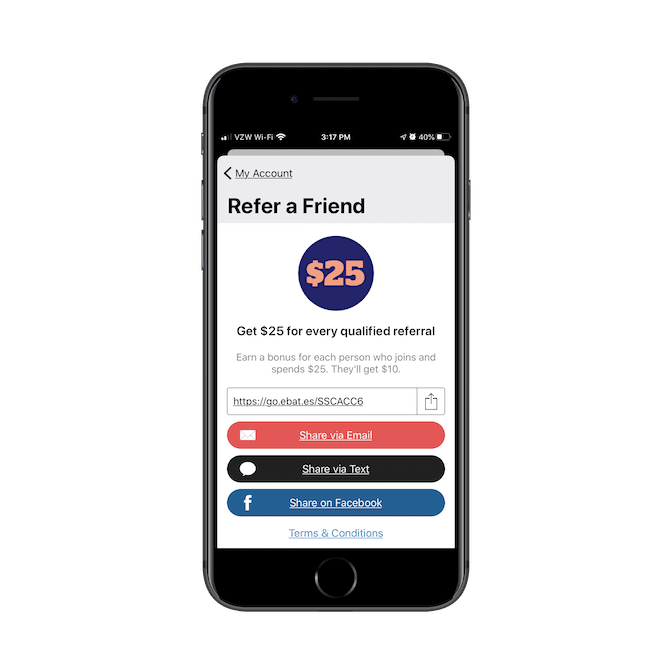
Image source: Telerik
When it comes to referral marketing, timing is everything.
While you need to consistently remind your target users that your referral program exists, you don’t want to do it at every opportunity. Becoming pushy in your marketing tends to, well, push customers away. The best times to promote your referral program are when users are most engaged and have just experienced value from your app, such as after completing a purchase or reaching a milestone. Strategically timing your referral prompts can increase their perceived relevance and avoid coming across as spammy.
Ideally, here are the best times to ask for a referral:
Here are more specific examples:
That said, the best times to ask for a referral depend on the nature of your product and how your customers interact with it.
You need to examine closely (or from a distance to be more accurate) how your users engage with your brand, from the time they discovered your company, to that pivotal moment when they signed up, and up to the time when they become brand advocates.
To uncover "touchpoints" or opportunities where showing or sending referral invites make the most sense and will have the most impact, you can create a user journey map or a user flow. One pro tip is that you can also leverage in-app analytics and user behavior data to identify key moments when users are most likely to be receptive to referral prompts, such as after completing a high-value action or achieving a specific goal within your app.
Here’s an example of a user journey map:
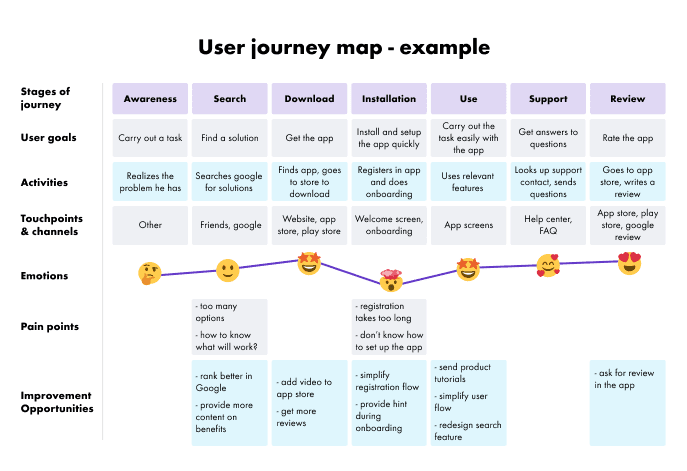
Image source: UXPressia
Customers have a tendency to ignore specific details once they become too familiar with a product. There's no help for it. After all, our brains are built to ignore things. To combat this, it is recommended for you to take a multi-channel approach to promoting your referral program, leveraging channels like your website, email marketing, social media, and in-app messaging. This helps keep your program top-of-mind and increases the chances of users discovering and engaging with it.
So, even if you have a dedicated section for your referral program within your app, some users will ignore them because they’re already assuming that it’s not relevant to how they want to experience your mobile app.
If you want these users to get onboard the referral train, you need to start promoting your referral program. In a world where distraction is the norm, customers are constantly moving targets. That’s why you need to use a multi-channel approach to reach them.
These channels include:
Leveraging multiple channels and touchpoints to promote your referral program can significantly increase its visibility and engagement among your customer base.
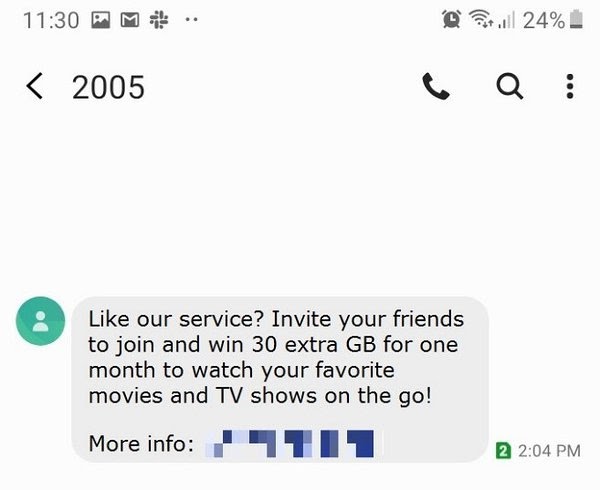
Image source: Messente
If you want your business to survive and thrive in the years to come, you need to be where the action is—people's mobile screens. But don't fall into the trap of using short-term strategies to maintain and increase your cash flow. After all, running a business is all about relationships and building a loyal customer base. According to research, acquiring a new customer can cost 5 times more than retaining an existing one. What better way to nurture your relationships with your loyal users than to make them feel they're a big part of your company's growth through a well-designed referral program? With the right referral program strategy, anything's possible.
Sign up for a free trial of GrowSurf to lower your customer acquisition costs, increase customer loyalty, and save gobs of time.


GrowSurf is modern referral program software that helps product and marketing teams launch an in-product customer referral program in days, not weeks. Start your free trial today.
Referrals marketing works because it's based on human psychology. Customer referrals will still be effective 100 years from now and here's exactly why.
Word of mouth marketing dates back 1000s of years, from spice trade to early metallurgy. Today? We dive into how to set up a customer referral program to last.
While referral programs are an effective way to promote your products and services, they’re not always easy to optimize. Here are 4 powerful ways to optimize your referral program.